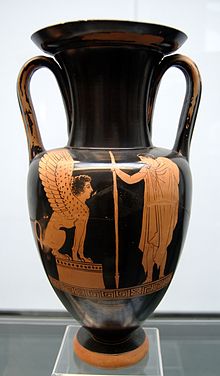User:William P. Coleman/Achilles Painter

The Achilles Painter, working from the 460s to the 420s BC, is the pseudonym of an ancient Attic Greek vase-painter of outstanding quality (see Pottery of Ancient Greece), whose refined figure of Achilles on a red-figure amphora of ca. 450-445 BCE in the Vatican Museum inspired Sir John Beazley to name its anonymous draftsman the "Achilles Painter." The Vatican amphora is thus the namepiece of the "Achilles Painter". The painter, to judge by his style, was a student of the equally-famous Berlin Painter, whose workshop he assumed about 460 BC; the artist's hand is now recognized on more than three hundred vases in three techniques, black-figure, red-figure, and white-ground.
In his early vases the Achilles Painter favored isolated figures against a black ground, often with themes of pursuit. His simple, balanced, two-figure compositions are a hallmark, and one of the reasons he is considered the most "classical" of all vase-painters of the classical period in the mid 5th century.
The Achilles Painter is known also for his white-ground lekythoi or oil-flasks for weddings and funerals, executed from the 450s to the 420s BC, among them some of the finest Attic painted pottery. His work bears a great variety of Kalos inscriptions.
Almost a dozen recognizable lesser painters passed through the Achilles Painter's workshop.
